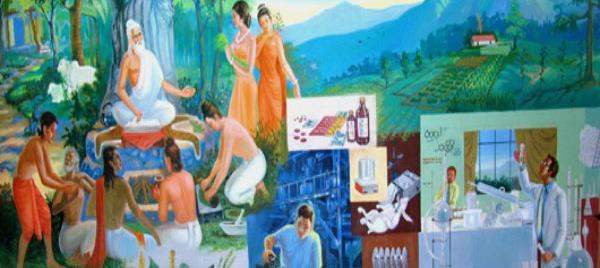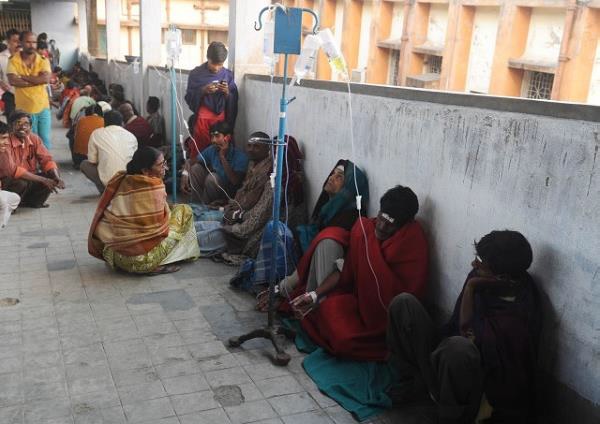
- Indian Economy Tutorial
- Indian Economy - Home
- Indian Economy - Introduction
- Indian Economy - Planning
- Indian Economy - Sectors
- Indian Economy - Demography
- Indian Economy - People As Resource
- Indian Economy - National Income
- Indian Economy - Poverty
- Indian Economy - Food Security
- Indian Economy - Employment
- Indian Economy - Infrastructure
- Indian Economy - Rural Development
- Indian Economy - Money & Banking
- Economy - Government Budget
- Indian Economy - Consumer Rights
- Indian Economy - Reforms
- Indian Economy - Open
- Indian Economy - Micro Economics
- Indian Economy - Macro Economics
- Economy - Sustainable Development
- Indian Economy Useful Resources
- Indian Economy - Online Quiz
- Indian Economy - Online Test
- Indian Economy - Quick Guide
- Indian Economy- Useful Resources
- Indian Economy - Discussion
Indian Economy - Infrastructure
Introduction
Infrastructure is an indispensable tool for the development of an economy, as it facilitates supporting services, such as −
- Transportation
- Aviation
- Telecommunication
- Power supply
- Education system (research and development)
- Banking system
- Hospitals
- Trade, etc.
Infrastructure facilitates not only economic development of a nation, but also improves the overall quality of life (of the people).

Initially, the development of infrastructure in India was seen as the responsibility of the Indian Government; however, later private players also came into the picture and started developing infrastructure as government alone was not in a position to take care of the entire development.
Still, a large portion of India has no basic infrastructure in place. People are using wood, cow dung patties, and other primitive means for cooking.
About 76% of the Indian population drinks water from open sources such as tanks, wells, ponds, etc.
Energy
Energy is an essential element for the development of any nation.
India has two sources of energy. They are −
- Commercial sources of energy
- Non-commercial sources of energy
Coal, petroleum, and electricity come under commercial sources of energy. They are exhaustible and non-renewable sources of energy (except hydroelectricity); that get depleted with use.

Firewood, dried dung, and agricultural waste come under non-commercial sources of energy. These are directly available from nature. They are renewable in nature.
The sources of energy, which are exhaustible and can be used only once, are known as conventional sources of energy. They could be both commercial and non-commercial sources of energy.
The major sources of non-conventional sources of energy are −
- Solar energy
- Wind energy
- Tidal energy etc.
By virtue of being a tropical country, India has a great potential of non-conventional sources of energy.
74% of the total energy production is consumed for the commercial purposes.
Coal energy contributes about 54%, oil energy contributes about 32%, natural gas contributes about 10% and hydro energy contributes about 2% of the total energy consumption.
Non-commercial sources of energy — cow dung, firewood, and agricultural wastes collectively contribute about 26% of the total energy consumption.
Power/Electricity is an essential element for the development of any economy. Research says that in order to have 8% growth rate in GDP, power supply needs to go up by 12% annually.
Thermal power produces about 70% of total electricity.
Wind and hydel power collectively contribute about 16% to the total power production.
Nuclear power contributes only about 2%; while the global average is 13%.
Challenges of Energy Generation
There are many challenges related to power generation and consumption.
India does not produce as much power as it actually requires.
There is a disparity in power distribution system.
Poor power sector management has given way to electricity thefts and distribution losses.
The Private sector has very little to contribute in the power sector.
High tariff rates and power cuts are the other challenges.
A major portion of India’s electricity is coming from thermal power, but the source (raw material i.e. coal) is getting exhausted.
Health Sector
Health status of a country reflects the level of development, i.e., overall development of the nation.
The development of health infrastructure leads to healthy manpower. And, healthy manpower ensures higher efficiency in production of goods and services.
Health Issues
Meeting the challenges of health infrastructure challenges is a tough one for India.
Major health-related issues that India has been facing since independence are −
Medical education,
Research and development for the medicines,
Adulteration of drugs or duplicate poisonous drugs,
Scarcity of medical professionals, etc.
Poor infrastructure (such as scarcity of hospitals, medicines, doctors, medical equipment, etc.)
In India, about 70% of the hospitals and 60% of the dispensaries are being run by the private sector.
They provide treatment to 80% out-patients and 46% in-patients.
The Government has implemented various healthcare policies and programs to overcome the health-related issues but, there is still a long way to go.
Indian Systems of Medicine
Indian System of Medicine (ISM) − The ISM integrates six systems of treatment under it. They are as follows −
- Ayurveda
- Yoga
- Siddha
- Unani
- Naturopathy
- Homeopathy

Other Facts
Medical infrastructure in India is poorly developed; there is a lack of funds as well as will-power to invest in the research and development of medicines.
Currently, there are about 7 lakh registered practitioners, 3167 ISM hospitals, and 26,000 dispensaries in India.
The health status of a country normally is evaluated on the basis of some indicators such as −
- Maternal mortality rates
- Infant mortality rate
- Life expectancy
- Nutritional level
In addition to these, current status of non-communicable and communicable diseases is also considered (to measure the health status).
Indian government expends about 8.2% of the total GDP on health sector, which is very low in comparison to other countries.
India has about 17% (population) of world’s total population, but unfortunately, it bears about 20% of global burden of diseases (GBD).
GBD is an indicator that measures the number of people who are dying prematurely because of a particular disease. It also considers the number of years they spent in a state of ‘disability’ (owing to the disease).
In India, maximum number of people die because of communicable diseases like malaria, diarrhoea, and tuberculosis.
About 5 lakh children die because of water-borne diseases.
2.2 million children die because of poor supply of vaccines and malnutrition.
Though about 70% of the Indian population lives in rural area, rural areas account to only one-fifth of the total hospitals (collectively private and public).

There are only 0.36 hospitals per one lakh people, whereas urban areas have 3.6 hospitals per one lakh people. This figure is comparatively better, but even this is poor on an overall basis.
20% of the poorest people in India, spend about 12% of their income on healthcare, whereas the rich people spend merely 2% of their income on healthcare.
There is a great disparity between women’s health and men’s health.
Women suffer many health problems and because of lack of health care systems, most of them are left at god’s mercy.
The discrimination between male child and female child is another big issue; this is the reason behind a very low sex ratio — 940 females /1000 males (2011 census), and 927 females/1000 males (2001 census).
More than 50% of married women aged between 15 and 49 suffer from the problem of anaemia and other nutritional problems. Surprisingly, this is the reason for 19% of maternal deaths.
Abortions (especially of girl child) are also a major cause of maternal deaths in India.
As discussed above, health of people is the symbol of nation’s growth. In addition to this, a better health is the right of every person that need to be taken care of in a proper manner.
The Following Table illustrates Share of Commercial Energy Consumption (in %) −
| Sector | 1953-54 | 1970-71 | 1990-91 | 2012-13 |
|---|---|---|---|---|
| Household | 10 | 12 | 12 | 22 |
| Agriculture | 1 | 3 | 08 | 18 |
| Transport | 44 | 28 | 22 | 02 |
| Industry | 40 | 50 | 45 | 45 |
| Others | 05 | 07 | 13 | 13 |
The Following Table illustrates Public Health Infrastructure in India −
| Items | 1951 | 1981 | 2000 | 2013-14 |
|---|---|---|---|---|
| Hospital | 2,694 | 6,805 | 15,888 | 19,817 |
| Beds | 1,17,000 | 5,04,538 | 7,19,860 | 6,28,708 |
| Dispensaries | 6,600 | 16,745 | 23,065 | 24,392 |
| PHCs | 725 | 9,115 | 22,843 | 24,448 |
| Sub-centres | - | 84,735 | 1,37,311 | 1,51,684 |
The Following Table illustrates Health status of India in Comparison to Other Countries (2012) −
| Indicators | India | China | USA |
|---|---|---|---|
| Infant Mortality Rate/1,000 live births | 44 | 12 | 6 |
| Birth by Skilled Attendants (% of total) | 67 | 96 | 99 |
| Fully Immunised | 72 | 99 | 99 |
| Health Expenditure as % of GDP | 3.9 | 5.1 | 17.7 |
| Govt. Health Spending to total Govt. Spending (%) | 8.2 | 12.5 | 20.3 |
| Private Expenditure on Health (%) | 86 | 79 | 22 |